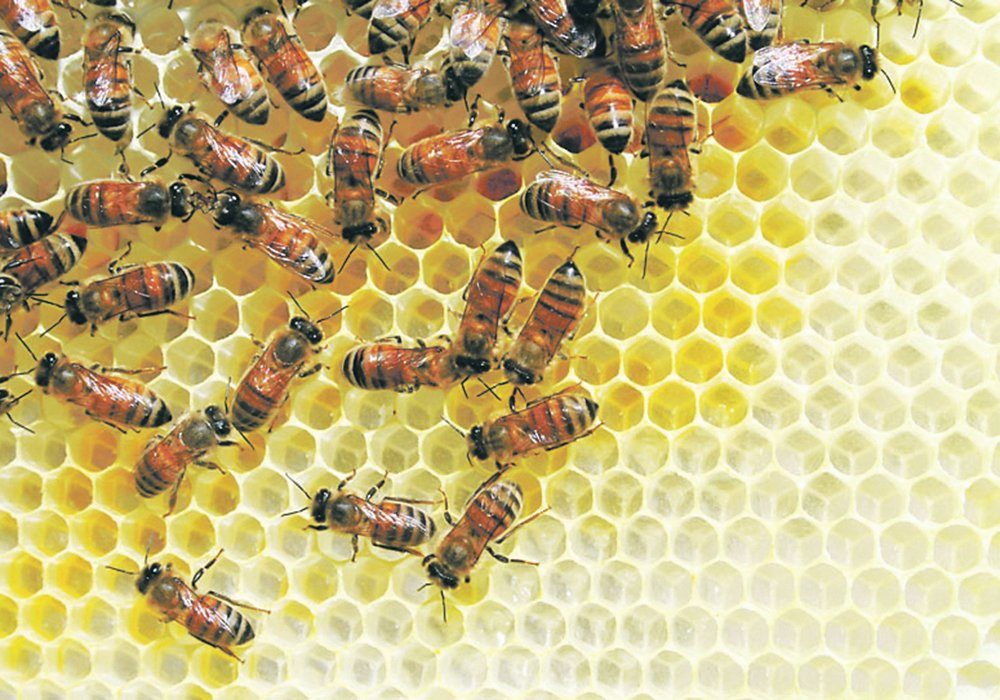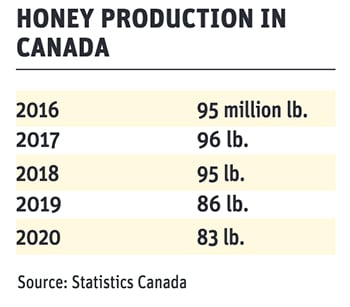Hot honey market leaves producers hopeful

Low winter losses across the Prairies and an increase in prices promise a profitable year for the region’s beekeepers
Prairie beekeepers are feeling hopeful this spring.
Honey prices are up, winter colony losses are down and 2021 is looking like a profitable year.
“I have more optimism for this year than I did last year. Conditions are pretty nice. Moisture is good…. It’s all there to be a relatively good (honey) crop,” said Curtis Miedema, vice-president of the Alberta Beekeepers Commission and a honey producer from Barrhead, Alta.
Last spring was a difficult time for beekeepers in Alberta. Colony losses were exceptionally high, as 40 percent of hives didn’t survive the winter of 2019-20. This year, the winter was milder and beekeepers had better control of varroa mites, a major pest of bee colonies.
Many beekeepers in Saskatchewan are also in good shape. On Nathan Wendell’s apiary, near the Manitoba-Saskatchewan border in Inglis, Man., winter losses were somewhere around five to 10 percent. That’s much lower than a typical year, when beekeepers lose 15 to 25 percent of their hives.
“(It’s) probably our lowest rate of mortality in a decade,” said Wendell, who lives in Manitoba but is president of the Saskatchewan Beekeepers Development Commission. “Our bees were healthy in the fall. The varroa mites were well controlled and we didn’t have any other issues going into winter.”
Other beekeepers in Saskatchewan have told Wendell a similar story — a high percentage of colonies survived the winter.
The other big positive in the beekeeping industry is strong honey prices, maybe the strongest ever.
For years, honey prices in Canada have been stuck at about $1.30 to $1.70 per pound. Prices climbed in 2020 and the rise continued in 2021 — hitting $2.25 to $2.50 per lb.
“After four or five years of prices at or below the cost of production… prices probably went up 40 percent last year,” Wendell said. “It’s really encouraging to see the prices remain strong.”
Bulk honey prices have jumped for a number of reasons.
One is below average honey output in Alberta, which produces about a third of Canada’s annual honey crop:
- From 2016-18, Canadian beekeepers produced about 95 million lb. of honey annually.
- In 2019 and 2020, beekeepers produced 86 million and 83 million lb., respectively.
The two-year drop in production cut into stockpiles and drove up the price of honey.
Another factor has been a crackdown on fake honey from China and other parts of the world. For years, Canadian and American beekeepers have asked for more stringent inspection of honey imports to keep fraudulent honey out of North America. Fake honey is typically made from rice syrup or corn syrup and filtered to resemble real honey.
The import controls may finally be working.
“The CFIA (Canadian Food Inspection Agency) has increased their inspection of bulk honey coming into the country. And (they’ve) identified some adulterated honey and seized (it),” Wendell said.
“The (United States) has also stepped up their efforts to manage the flow of adulterated honey into the North American market…. If you take (that) out of the marketplace and are only left with genuine, real honey, the price has to go up because the volume just isn’t there.”
From April 2019 to March 2020, the CFIA tested 275 shipments of imported and domestic honey. The agency detected more than 200,000 lb. of fake honey.
“The CFIA took appropriate enforcement action on the honey that contained added sugars, preventing more than 83,000 kilograms of adulterated honey from being sold in the Canadian market,” the CFIA said in 2020.
Prices could be strong for a while, as U.S. honey production was down six percent in 2020.
The U.S. is the largest importer of honey in the world and the top destination of Canadian honey.
“As of right now, you can sell honey for $2.25 (per lb.) forward contract,” Miedema said.
He doesn’t use forward contracts in his business, but the healthy prices are reassuring.
“(It’s) a huge positive…. I’m excited about the price and things are looking good.”
Source: www.producer.com


